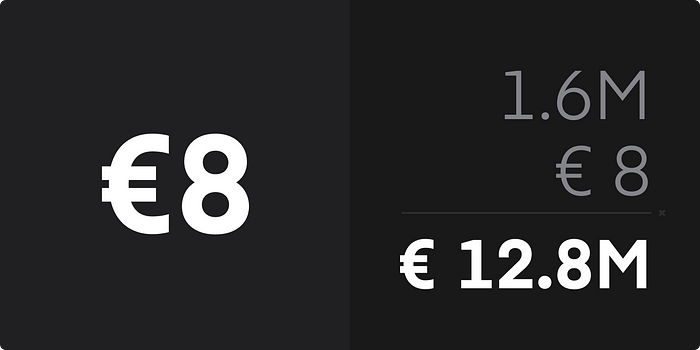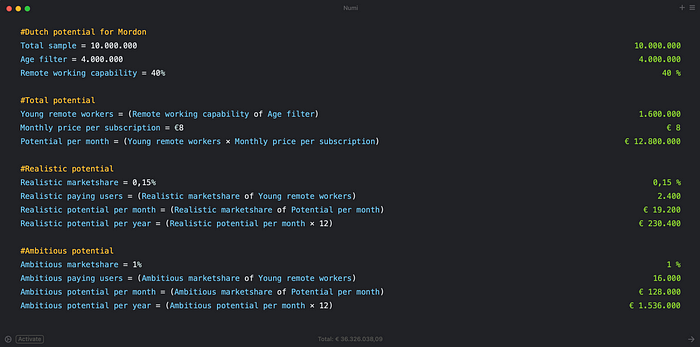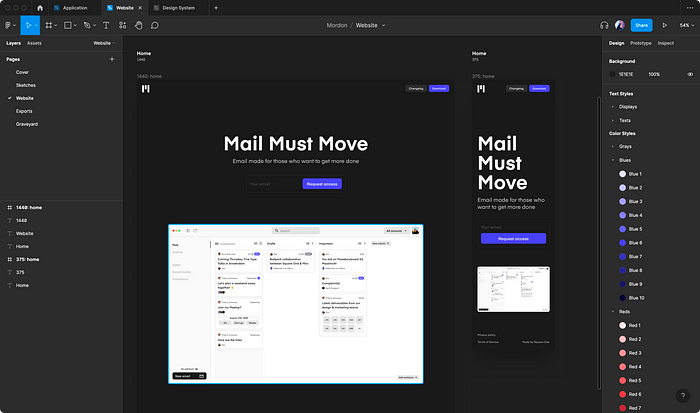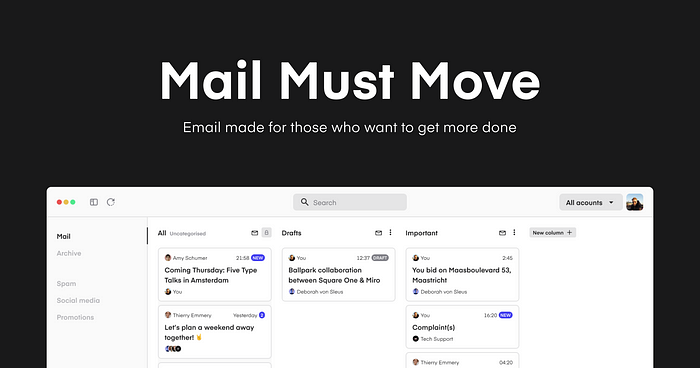

The process of launching a digital product as a closed beta in order to test you...
source link: https://blog.prototypr.io/the-process-of-launching-a-digital-product-as-a-closed-beta-to-test-your-hypothesis-and-gain-eab3645fbbf9
Go to the source link to view the article. You can view the picture content, updated content and better typesetting reading experience. If the link is broken, please click the button below to view the snapshot at that time.
The process of launching a digital product as a closed beta to test your hypothesis and gain collaborators
How do you test a technically advanced digital product without much money and developers?
I am launching Mordon, a new email client, to help you get more done. In this article, I will reflect on my past two weeks and why I decided to launch Mordon as a closed beta.
Mordon email appJumping back in time
It was about early July (2022), and something had been bugging me for the past few weeks. I watched my girlfriend use her email app while grouping and filtering her emails. And even though I didn't realize it at the time, that little moment would have a massive impact on me.
I asked her why she was grouping her emails, and she explained that she needed to track progress on certain emails she was working on to do her work well. She grouped them per project, or sometimes per colleague, and then she would flag them based on whether something was upcoming, in progress, or done.
At that moment, a tiny little light started flickering inside my head. Because I felt it looked an awful lot like how I tend to work daily. But it wasn't till the next day, when I opened my Notion app, that I saw I was structuring my work similarly. The only difference was that I was doing it on a Kanban board.
I was working on a project that required me to track different tasks across different workflow stages from left to the right, divided by various topics from top to bottom. And then the most simple thing struck me. Email is kind of a database, just like Notion.
It may not be shown as a table, and the data points are fixed (recipients, subjects, message, etc.), but it is, just like anything else, stored in a database. And databases can be expanded upon and looked at through different lenses.
So I ran back to my girlfriend, and I asked her. How much time do you spend organizing your work email? And do you enjoy spending time on it? She said she easily spent her whole morning organizing, grouping, and tagging. And she told me it was one of the most tedious parts of her day.
And that is when I realized there is something to be gained here, a problem to be solved, a new solution to be introduced.

Defining a hypothesis
The lightbulb in my head was turned on completely now, and it was time to scratch my own itch. Imagine if a Kanban board can make email management faster and more enjoyable. Imagine if you could manage your email like your fancy databases. Imagine if you could automate tasks based on the work emails you get. The possibilities seem endless!
Since I am a digital product designer with a background in branding and usability, the challenge wasn't so much about visualizing a concept but instead defining a solid hypothesis to be tested. Because at the bottom of my designer heart, I want to make things look good before they are good.
Luckily I am aware of my bias, so I started with a holistic approach and defined three top-level questions that I thought needed to be explored to figure out if Kanban could work as an email client:
- Can Kanban radically improve email management?
- Is there money to be made in the world of email?
- And, is it scaleable?
To Kanban or not?
To answer the first question, I talked to people who work primarily through email and asked them how they structure their current process, what they experience to be their general pain points, and whether they think Kanban could offer a solution.
Most people told me that setting up filters or smart folders is annoying and often doesn't work. Emails that should get filtered out, get in, and vice versa. There is a ton of spam, and loads of emails get lost in the endless list called your inbox.
But to see whether what was being said was also true, I asked some people whether I could watch them work with their email for a while. And surprisingly enough, it seemed that how people told me they work came close to what they did, which is usually not the case.
But even though what they said came close to what they did, it was effortless to spot numerous little nuisances and frustrations that people had while working with their emails. The expressions on their face said more words than my interviews would have ever gotten.
I saw people accidentally trying to move emails to smart inboxes. I saw filters that either made sense but didn't catch the emails, or they didn't make sense and caught all the emails. And I saw people tagging, pinning, and marking their emails over and over again based on their workflow. All while having their brows frowned and their eyes focused razor sharp on what they were doing.
So I knew there is definitely a problem with how things are working in email now. But this doesn't tell me whether Kanban can solve most of this pain. So I needed to think about how I could test my idea in a way that wouldn't cost me a ton of money and would allow me to get results relatively fast.
But before continuing, I figured it would be best to see if there is any market potential in this field before I started spending time on something that wouldn't be able to come off the ground in the first place.
Money, money, money
So, on to answer the second question! I figured that to have a rough feeling about whether there is a market potential here, I need to know how many people use email for business and how many are willing to pay for it.
I decided to keep my sample size relatively small to keep my sanity. The reason being is because I know email is used worldwide. But believing there are no differences between regions and local customs regarding how email is structured and organized could easily set me off in the wrong direction.
So instead, I decided to start close to home, in the Netherlands, where anonymous data on market statistics are available for free through a local business that collaborates with our government called the CBS (Central Bureau for Statistics).
I first looked at how many people do digital work in general. Within the Netherlands, there are about 10 million employees, of which roughly 40% can work from home through a computer or laptop. Which is a total sum of 4 million people.
To scale my sample size down, I decided to only focus on the ages between 25 and 50, to challenge the number. This limitation scaled the total number down to 1.6 million people of which I believe almost all will have at least one business email related to them.
After that, I looked at how much people are generally willing to pay for a productivity app. By looking at popular tools in the Netherlands like Notion, Asana, Monday, and some others, I concluded that the generally accepted price is about €8 (or dollars, for that matter) per person, per month, for smaller productivity apps. And up to €15 or more for corporate and larger productivity apps.

Taking the lower bound of €8 and multiplying that times 1.6 million people is a beautifully unrealistic number. But I figured that if I could roughly estimate the number of costs I would have per month to run this app and pay myself (and maybe some others) a salary, I would know the amount of paying users I would need at the very least to break even and in turn, perhaps even be profitable.
The nitty gritty
So yet again, I have no clear answer about whether this idea can make money because, in the end, it depends on whether people will use my product or not. But what I do know is that people are willing to pay for productivity apps and that there is a problem to be solved that probably affects a ton of people.
So that brings me to question number 3, is it scaleable? And to figure that out, I believe I have to set some arbitrary numbers that seem reasonable, which I know will probably be wrong anyway. Because having a rough number helps you understand how much effort things will be and how probable it is that you'll see it through.
I decided to divide my estimated expenses into two categories. The first is salaries. And the second is, running costs.
- Salaries: As a product designer, I figured I could take the lead in researching and designing possible solutions to the email overview issue I believe I uncovered. At the same time, my basic HTML, CSS, and JavaScript skills aren't going to allow me to build anything remotely usable. So I decided I wanted to consider at least one front-end developer and one back-end developer.
- Running costs: Because we will be utilizing different technologies, possibly APIs, and we need to market this thing to find a product-market fit. So there are costs hidden there.
For the salaries based on three people (myself included), I figured that if we are all co-founders, we should all be happy to earn €3.500 after tax each. So let's say €10K per month. As I said, this is an entirely arbitrary number, but it gives me something to discuss and aim for.
For the running costs, I figured that you can easily spend another €100K a month on marketing alone. Still, I decided to cap the total amount to €10K for running and marketing our product through Reddit Ads, some guerilla stunt, and stuff like that.
Taking both categories and combining them would mean that our first target is to earn €20K a month, and this number gives me a way to calculate how much of a market share we would need within the Netherlands to break even.
One plus one is three
Shoutout to the Numi app because I am not a great mathematician, and this app helped me write out my thoughts in numbers. Which I believe is a super powerful way of making sense of what you are thinking.
What I did was: I took the arbitrary number of €20K that I came up with and divided that through the 1.6 million people I took from the Central Bureau of Statistics. Using Numi, I broke down my calculations so that I could update them whenever necessary.

As you can see, to make €20K a month, we would have to turn about 0,15% of our target market into a paying customer within the Netherlands. That is a total of 2.400 paying customers.
Ready, set, try
By the time I calculated everything, I was roughly two days into my process of figuring things out for myself. It was a little daunting but somehow also very encouraging. And the more I thought about the above, the more I understood what it would take me to get this idea off the ground.
Encouraging because out of the 1.6 million people available to me in this country, 2.400 doesn't seem like an impossible number. At the same time, though, I realized that I wasn't going to be able to do this alone and to convince any of my developer friends to join me on this venture, I decided I needed some proof as ammunition to get them on board.
Sneak attack!
The first thought I had was that if I could show the people I want on board that Kanban solves an actual issue, they might be keen on jumping in on it.
However, I realized that building a prototype in Figma or some other design software to test my hypothesis would take me a ton of time. Simply because I believe that to test this well, people have to recognize their own emails in the email client. This means I would have to customize the prototype before every test to mimic someone's inbox.
At the same time, I also felt that my being the only pair of eyes on this project would limit the insights I gained. I firmly believe that product research is a team effort. So instead of me building the prototype and running tests beforehand, I decided it would be best if the prototype were built and tested together.
But I still needed a way to get people excited and see if there was any merit to my idea. And this is where the closed beta comes into play.
While contemplating all of the above, I started visualizing my thoughts by designing possible solutions, thinking of potential names, and sketching visuals that fit my perspective on how this thing could communicate and operate.

And when I was playing with a simple landing page to help me figure out how to communicate my idea, I realized that this might very well be a way to see if anyone even understands what I am trying to achieve.
I asked myself: What would happen if I showed a screen of emails on a Kanban board, wrote down my goal, and asked people to leave their emails to get beta access? Depending on the number of visitors vs. the number of people leaving their email, this could indicate how people perceive the idea and whether anyone is eager to try it out.
And that is what I did. I started brainstorming names, a few hundred of them, and with the help of my friends
and , I was able to conceptualize the first version of the brand, tone-of-voice, and product that I was aiming for.For which I then built a landing page in Webflow, asking people to leave their emails while only showing a single screen and one message; Mail Must Move.
Today
It has now been about three weeks since I launched the landing page. And with a bit of promotion on Reddit, Hacker News, and some other places, I could generate about 3.000-page visits. And guess what?
A rough 300(!) people left their emails. That is an insane conversion rate, or let's call it, interest rate, of 10%! So yeah, I spoke to some of my developer buddies. And at the moment, it indeed seems we will be building that prototype soon. Because as excited as I am. So are they.
Thank you
If you have made it all the way down here. Then I hope that my story of the past few weeks has given you insights into what a startup process roughly looks like and how you can utilize your tools and wit to provide yourself with the insights needed to start small.
Want to see more?
Recommend
About Joyk
Aggregate valuable and interesting links.
Joyk means Joy of geeK
